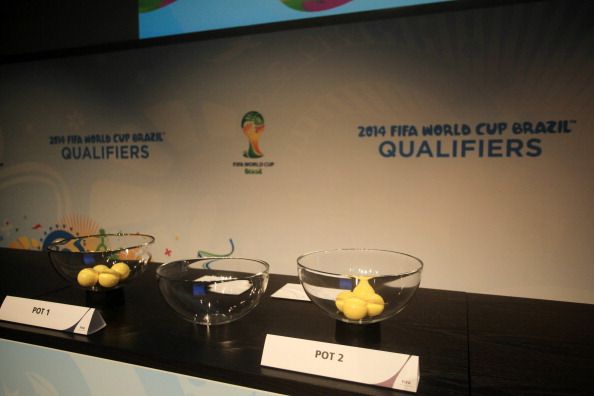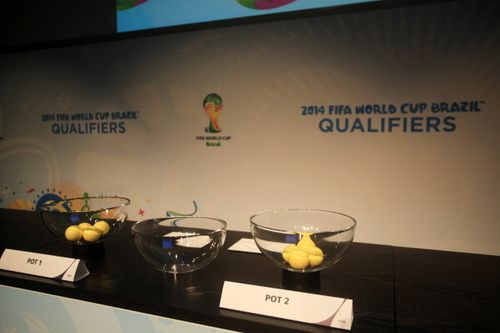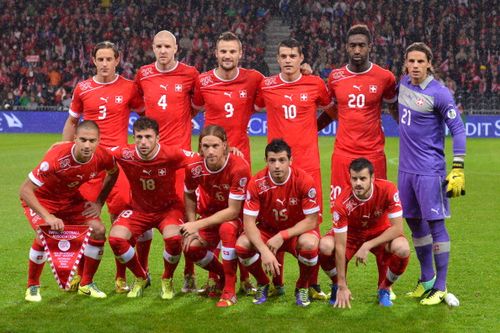
How the Swiss stole a march on Italy, Netherlands and England
As the world tunes in to the 2014 FIFA World Cup draw in Costa do Sauipe, the beautiful coastal town on the Brazilian coast on Friday, anyone not keenly following the build-up to it will be forgiven for asking the question – how on earth did Switzerland get into the pot of seeded teams ahead of the likes of perennial tournament heavyweights Italy and the Netherlands?

Switzerland’s presence among the teams seeded for the 2014 World Cup draw has raised eyebrows
A place in Pot 1 gives you a huge advantage as you cannot be drawn into the same group as one of the other seeds, such as hosts Brazil and other favourites Argentina, Spain and Germany. All the unseeded nations have been split into pots on the basis of their respective continents. FIFA’s draw procedure can be found here, but its contrived nature has made it seem far more complex than it actually is.
Quite simply, since the number of unseeded African and South American teams totals 7, and the corresponding number for Europe is 9, one of the European teams will be plucked and put into the other pot.
Second, since FIFA requires that a maximum of two European teams can be drawn into one group and one pot consists of all European teams, the aforementioned team can only be drawn against a non-European team from among the seeded teams, i.e. Brazil, Argentina, Colombia and Uruguay.
Finally, since any group can contain only a single South American side, the unseeded Chile and Ecuador can only be drawn against Spain, Germany, Belgium or Switzerland from among the seeds. Simple enough to understand, if spelled out this way. All the jargon of a pre-draw, a Pot X only adds unnecessary complexity in understanding an essentially simple and logical draw process.
Coming back to the original question – Why is Switzerland sitting alongside Spain, Germany, Argentina and Brazil? The answer can be found in how FIFA’s ranking system works, and how the Swiss have played it to their advantage.
The ranking system takes into account results over the last four years, with more weightage given to recent results. Each game gives you a certain number of points, and the average number of points per game determines the rankings. The formula for the points earned from each game is –
Ranking points = M x I x T x C
Here M is simply the result, that is, 3 for a win, 1 for a draw and nil for a loss. I signifies the importance of a match, 4 for a World Cup game, 3 for Confederation level (Euro or Copa America, and the other such continental tournaments) or Confederations Cup, 2.5 for a World Cup or confederation-level qualifier and 1 for a friendly.
T denotes the strength of opposition, equalling 200 for the team ranked world number 1, and reducing sequentially to 50 for rank 150 and lower ranked teams. Finally C corresponds to the strength of the confederation of the opposition, 1 for Europe or South America, 0.88 for the CONCACAF, 0.86 for Asia and Africa and 0.85 for Oceania.
Out of all these factors, what affects the ranking points earned the most by far is the importance of the match. The way I is currently determined, a narrow victory over, say, a Sweden in a World Cup qualifier would get you about 1200 points, while a hammering delivered to a giant like Spain or Brazil in a friendly would win you only about 600.
Effectively, the higher the percentage of ‘important’ games (anything other than friendlies) played in the calculation period, the bigger the opportunity afforded to gain points and the higher your average is likely to be. And this is where the Swiss have done brilliantly and the Italians and the Dutch have missed a trick.

Switzerland have dominated a weak World Cup qualifying group.
Switzerland have played only three friendlies over the year leading up to the October date when the seeds were determined, while bossing a qualifying group comprising Iceland, Slovenia, Norway, Albania and Cyprus. Italy, despite finishing third at the Confederations Cup this summer and second at the Euros a year earlier, have played a much larger number of friendlies over the last two years and have a terrible record of one win and five draws in 12 friendly games. Even that lone win, since it came against lowly San Marino and brought them a mere 150 points, brought down their average almost as much as the losses. Similar reasons have accounted for the lower ranking of the Netherlands.
A natural advantage South American teams have within this system is that they played 16 qualifiers while the European nations played 10, and thus had a higher percentage of games that were ‘important’. Moreover, the T parameter that accounts for the quality of opposition was also, on average, higher for South American teams, while European nations had no choice but to have their average dragged down by games against the likes of the Faroe Islands and San Marino, the result notwithstanding.
In summary, playing fewer friendlies and fewer games against lowly opposition maximizes your chances for gaining ranking points in the current system, and knowingly or unknowingly, Switzerland have taken advantage of it. One wonders if, following this episode of the 2014 World Cup seeding, countries with any ambitions of getting seeded at future tournaments will think twice before playing friendlies with the minnows of the footballing world.